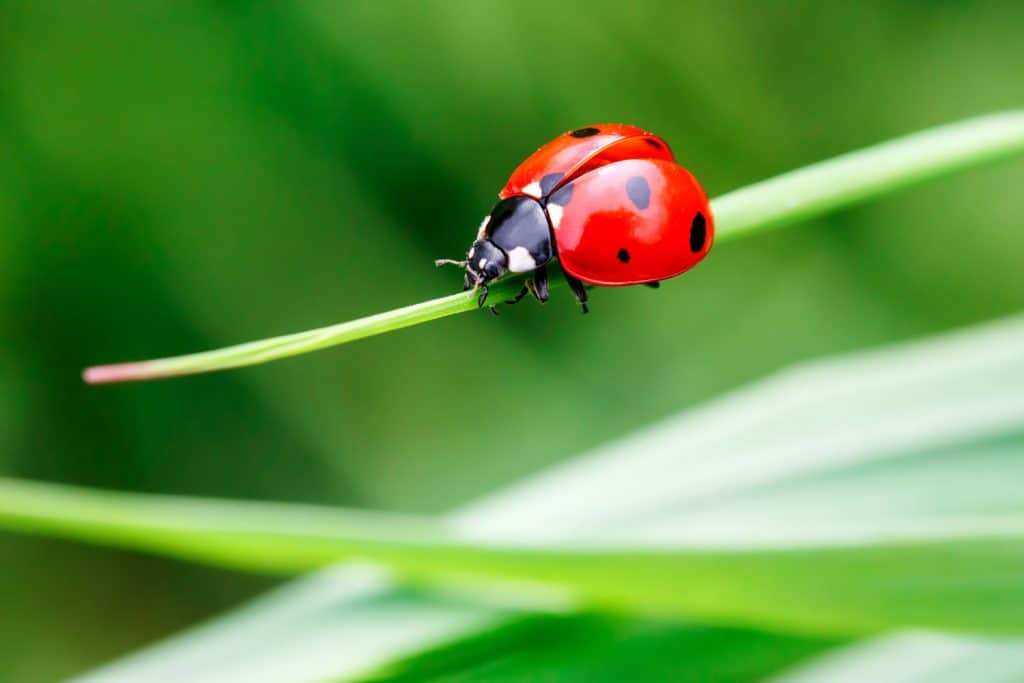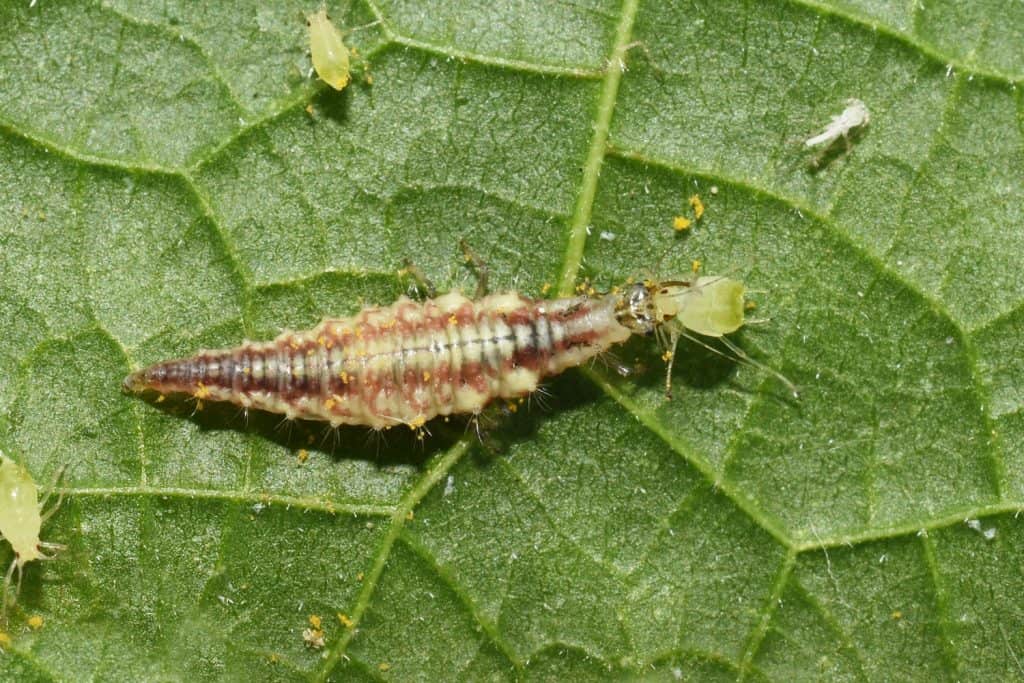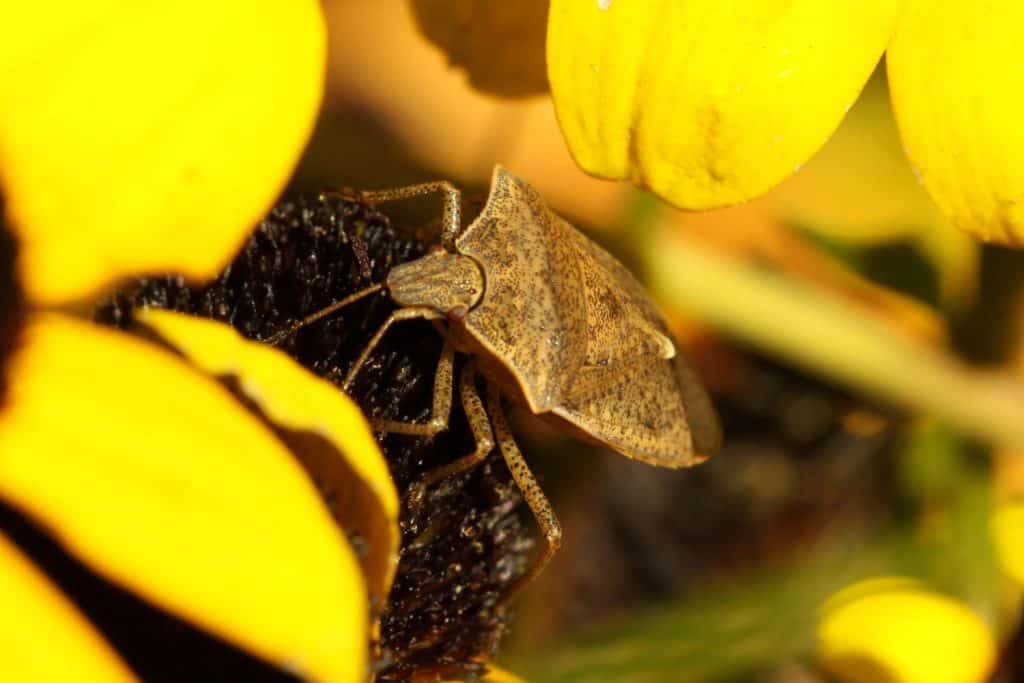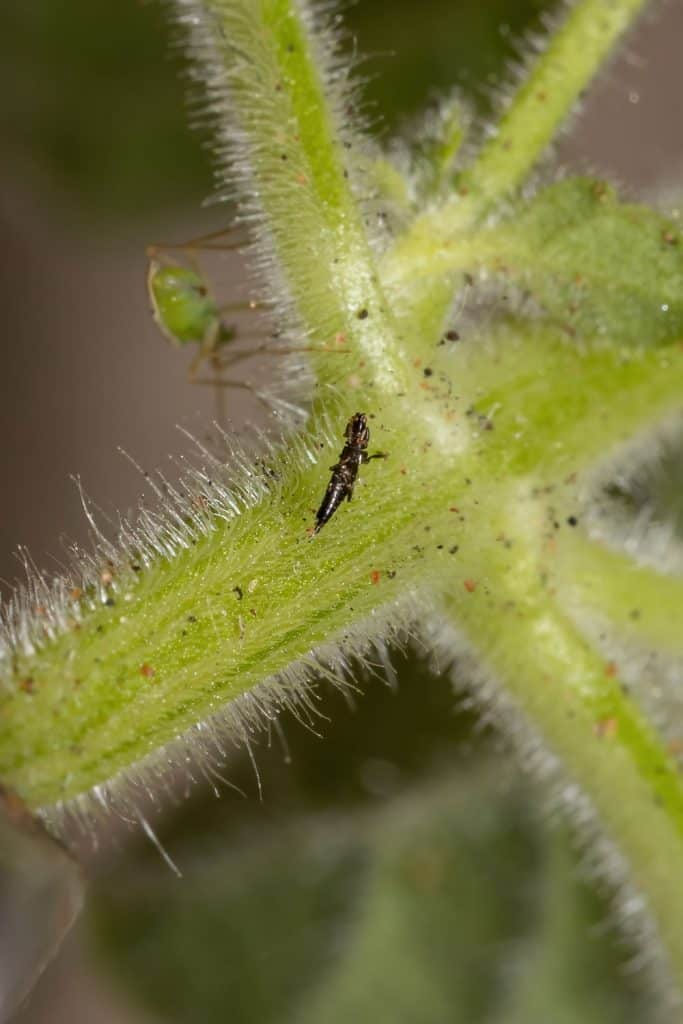You probably have red spider mites if you have little white or yellow spots on your plant leaves and wispy webs throughout your garden. These pests weave little webs throughout the plant and suck the sap and chlorophyll out of the leaves. They leave behind signs of their existence and, if left to proliferate, will destroy entire gardens. It is imperative to get red spider mites under control the moment you notice any of these signs. Fortunately, several natural predators can be used to control mite populations. We have completed the most in-depth research to provide a list of other creatures that eat red spider mites.
The creatures that eat red spider mites include predatory mites, ladybugs, lacewing larvae, spined soldier bugs, and thrips. All of these natural predators are available for purchase from biological control supply houses (except for thrips - see why below). For best results, it is imperative to release these predators at the first sign of red spider mite infestation - do not wait!
Red spider mites have the potential for each female to lay 100 eggs over three weeks. Within two months, ten red spider mites could be 100,000! This is why it is so important to get the pests under control immediately. In the following text, we will give more details, pictures, and helpful hints to attracting spider mite predators.

Predatory Mites
Predatory mites eat the mites in all stages of lifecycle (eggs, larvae, adult). The most common predatory mite is the Phytoseiulus which is red as well. It is larger and more solitary.
These mites are used for spider mite pest control in greenhouses and crops grown in mild climates. They can eat around seven adult mites and dozens of eggs a day and reproduce faster than the red spider mites.
These predatory mites are the most effective form of biological control agent to eliminate a red spider mite infestation, but it is best to introduce these predatory mites at the earliest signs of red spider mites. The infestation of the red spider mites alone can attract the predatory mites, but they will probably need to be purchased.
Ladybugs

Ladybug or lady beetles are natural predators of red spider mites. They can be seen throughout the world and can be yellow, pink, orange, red, or black with spots. The larvae are very beneficial because since they do not yet have wings, they stay in the garden to search out any food source. Once in the adult stage, they will fly to new food sources once the food is less abundant.
Ladybugs can eat up to 100 red spider mites per day, potentially 5,000 in their lifetime. Both adults and larvae eat the mites. They are the most common source of biological insect control. Planting dill and fennel will help to bring more ladybugs to the garden naturally.
Green Lacewing Larvae

Lacewing larvae in two to three weeks can eat up to 11,000 red spider mites. They are a light yellowish color with darker brown markings on their backs. Lacewing larvae have strong jaws and legs and suck the red spider mite fluids until dead.
The advantage to the larvae over other predatory bugs is that they do not have wings and will stay in the garden areas until they hatch. Once they have become adults, they no longer feed on other insects. Biological control supply houses sell lacewing larvae. Planting golden marguerite, coriander, and dill in and around the garden will help to attract green lacewings.
Spined Soldier Bugs

The spined soldier bug is a type of stink bug that is beneficial. It is most notable for its silvery brown, armor-like coloring with pointy horizontal corners on the top of the wings by its head. Both larvae and adult bugs will feed on mite populations.
The spined soldier bug is a favorite for natural predator control because not only do they keep mite populations down, but eat a wide variety of over 100 garden pests. Linden trees, marigolds, potatoes, tomatoes, sweet corn, eggplant, beans, onions, apples, asparagus, and zinnias attract spined soldier bugs to the garden.
Thrips

Thrips are predators of red spider mites; however, they should not be introduced into a garden to control the population of the red spider mite because they too are garden destroyers. Not only do they eat leaves and destroy crops, but they are a huge transporter of plant viruses such as impatiens necrotic spot virus, which attacks many different plant types.
They are small, thin flying insects only 1/25 of an inch long. According to the University of Kentucky's Entomology Department, they devastate crops by sucking the sap out of the leaves.
Predatory mites, ladybugs, green lacewing larvae, spined soldier bugs, and thrips are the most common natural predators of the red spider mite. Below, we have answered a few more questions that you may have regarding red spider mites:
Do spiders eat red spider mites?
Spiders do not eat red spider mites. Do not use spiders to control red spider mite populations because they are not natural predators. They do, however, eat many other garden pests like grasshoppers.
Are red spider mites harmful to humans?
Red spider mites are not harmful to humans. They are simply a nuisance that can maim and kill plants. For more details about this topic, check out our blog, "Are Red Spider Mites Harmful To Humans?"
Where do red spider mites come from?
Spider mites prefer a hot, dry climate, optimal conditions for breeding grounds --with few natural predators. That potentially makes your home or garden an ideal location. Overuse of insecticides or other chemical pesticides can kill the natural predators to the mites.
Red spider mites can be transported into the garden or greenhouse on other plants or on the clothes of the gardener. Due to their small size and the fact that they are usually on the underside of leaves, they easily go undetected until damage begins.
What plants deter red spider mites?
Sometimes defense is the best offense. Plants that will repel red spider mites include garlic, rosemary, cinnamon, peppermint, lemongrass, chamomile, marjoram, thyme, lettuce, chili pepper, wild tomato, eucalyptus, and neem shrubs.
To begin with, all or some of these plants can be planted within and around the garden to help prevent red spider mites. Check your local conditions for the optimal plants for your gardening zone.
How to get rid of red spider mites
Besides introducing the natural predators listed above, there are five other ways to get rid of red spider mites:
- These little pests thrive in hot, dry conditions, so spraying your plants with water regularly can be the first line of defense. Make sure to reach the undersides of the leaves and the base with the water. You want to focus on breaking the webs.
- Horticultural oils work well to kill mites. They are less detrimental to other helpful insects (versus insecticides).
- Insecticides formulated specifically for mites will kill them but can be harmful to helpful insects.
- Neem oil is safe for humans. It is highly effective in killing mites.
- Chemical pesticides are a last resort. Only use them if you can't get rid of the mites in the ways included above. They will kill the mites, but also beneficial insects and are harmful when ingested by humans.
For more specific information about removing spider mites from a majesty palm, check out our blog, "Spider Mites On Majesty Palm – What To do?"
Who eats ladybugs?
Ladybugs emit a bad odor which is their main defense, but they do still have a lot of natural predators. Other insects include dragonflies, praying mantis, ants, parasitic wasps, cellar spiders, assassin bugs, other ladybugs, and robber flies. In addition to insects, a wide arrange of birds and frogs eat ladybugs.
Summary
Red spider mites are a huge nuisance for the garden, but they have several natural predators, including predatory mites, ladybugs, green lacewing larvae, spined soldier bugs, and thrips that will keep populations under control. Except for thrips, all of these can be purchased from biological control supply retailers.
The Association of Natural Biocontrol Producers provides a comprehensive list of companies in North America that sell predatory insects to control pests naturally. You can also add plants that will naturally attract these predators to your garden. Happy gardening!
